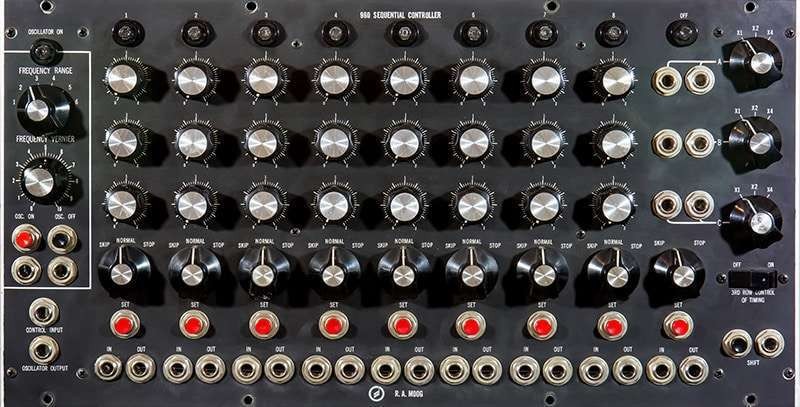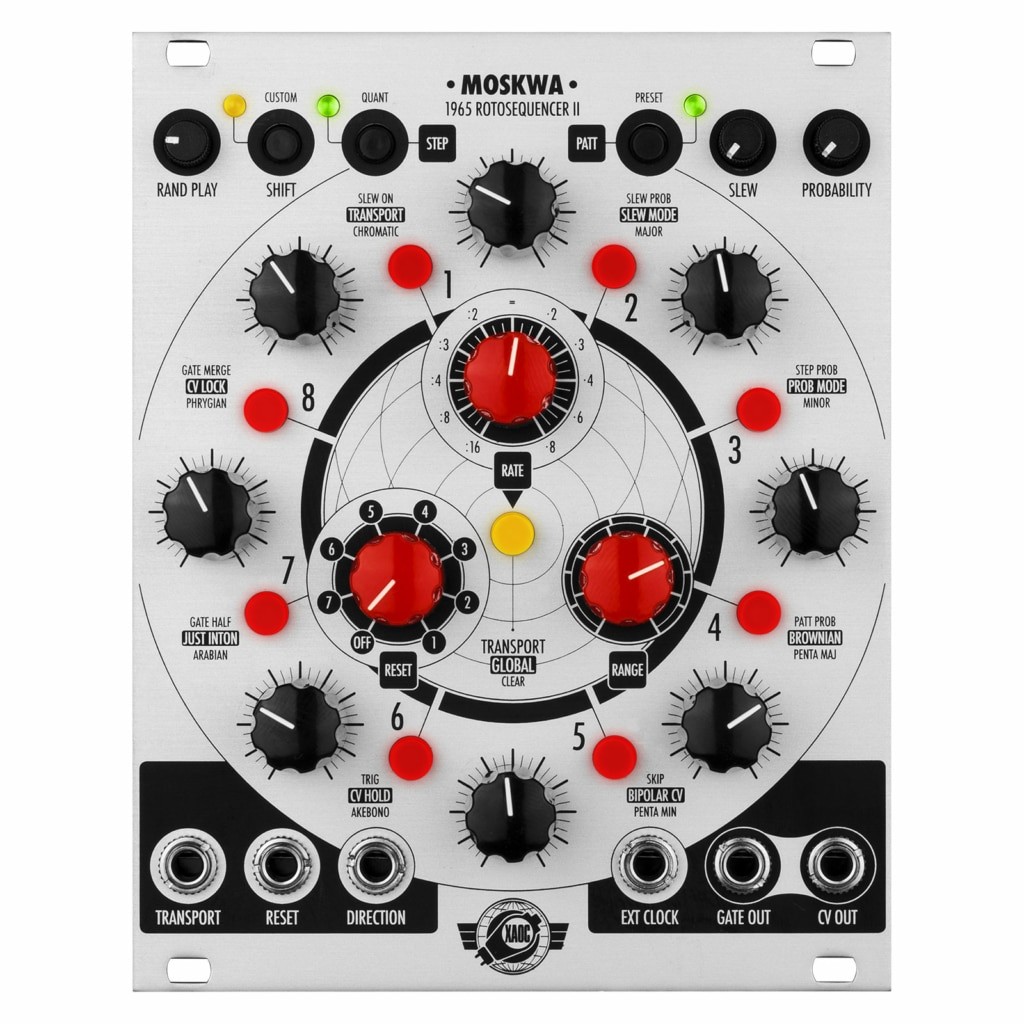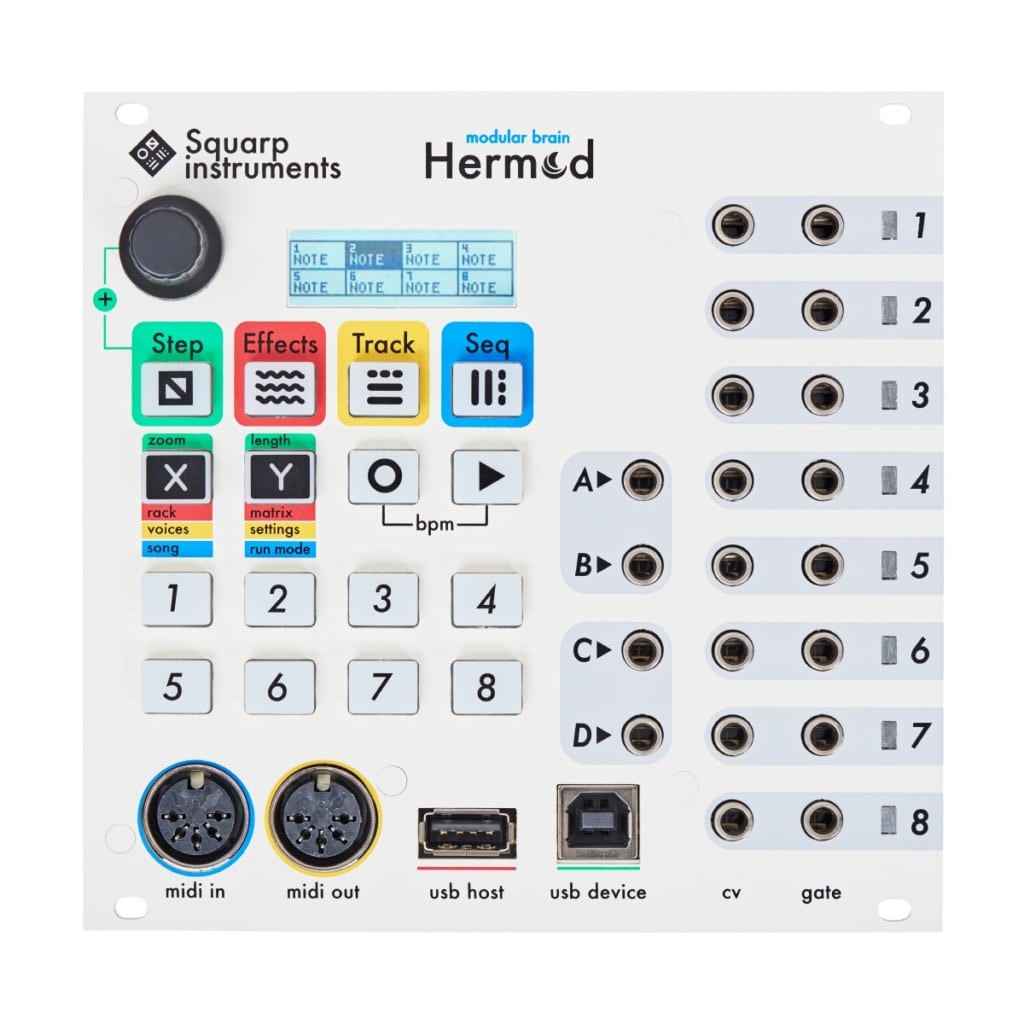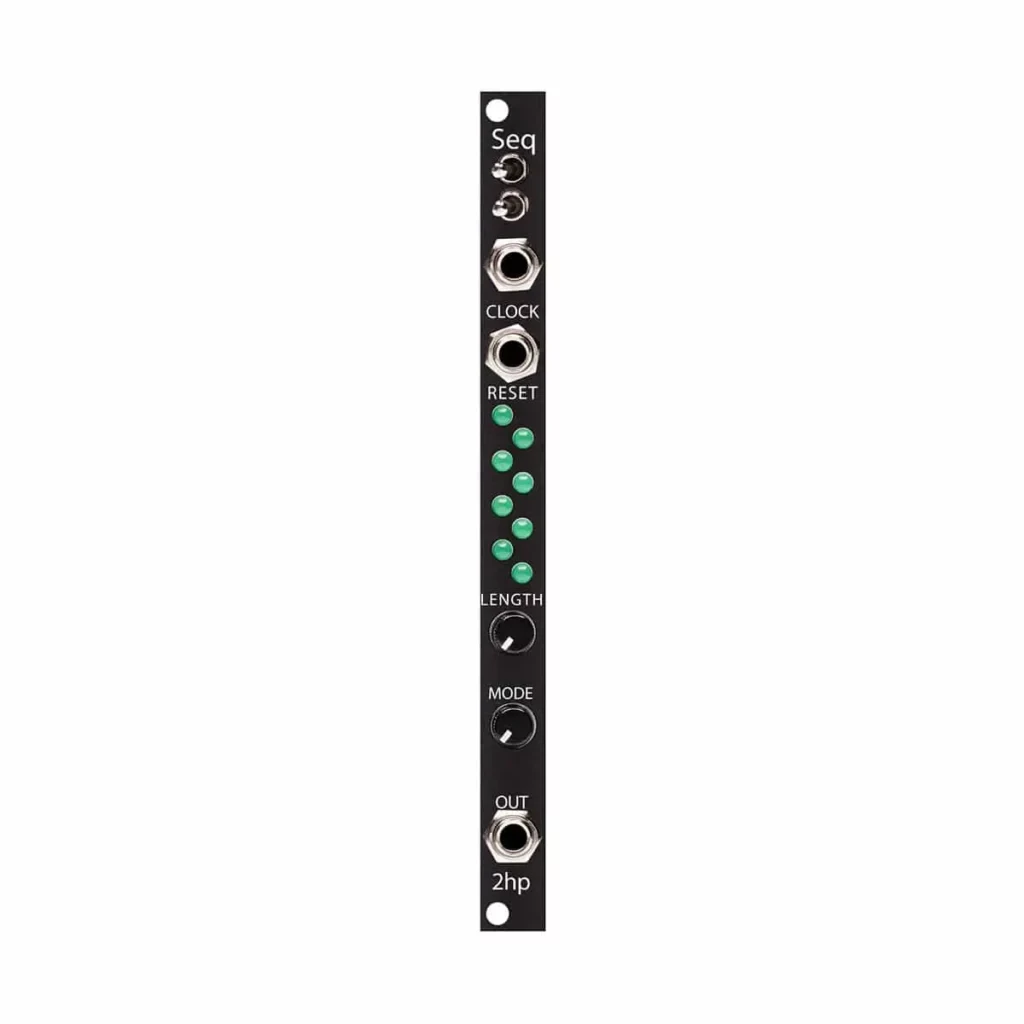Synthesis and Synthesizers
Published on 07/02/2022

The relationship between electronic and automation has been, since ever and even in non musical contexts, very tight. It is so easy to imagine that also in the modular synthesizers world circuits dedicated to automation are very well represented. As we have already been talking about, the automatic generation of notes (and rests) is assigned to the Sequencers.
In its original form factor the sequencer is logically organized as a matrix. The columns are bound to the steps of the sequence and the rows are to represent the several possible processing for each step.

Considering the sistem in the above picture (Moog 960) the steps (the columns) are eight. Every column has its own control set. The first three rows generate CV signals to be sent,
for instance to the oscillator (to determine the pitch), to the envelope generator (Gate) or to the amplifier to determine the loudness of the signal (Accent or Velocity).
The forth row is to define if the step has a not or a rest.
This basic structure evolved with years and, in nowaday's catalog, we can find several alternatives.
Let's explore some of them (without thinking to cover all the possibilities) taken from the items proposed at Milk Audio Store.
We decided to start from this one because is made by Doepfer. So this is our way to homage the Company which made possible the actual modular synthesis reborn. As the reader can easily check by him/herself, this unit is strongly inspired by the Moog 960.

The Dark Time is a 2x8step analog sequencer with CV/gate, USB and a MIDI interface. In the first place it is planned as an add-on for the Dark Energy but may be used even in combination with other Midi, USB or CV/Gate equipment too.
The sequences are output via MIDI but also as CVs which adds to the flexibility of the sequencer.
The unit can play two sequences each with up to eight steps or one sequence with up to 16 steps.
Different running directions like forward, backward, random are available and even a “custom” mode which allows for programming your own modes. In the 2×8 mode each sequencer row can play on a separate MIDI channel and they can have different sequence lenghts and running modes.
Each step offers a number of options like skip, mute and reset as well as stop, continue and jump which determine if a step is played or not or if a trigger is output.
The sequences can also be quantised. The Dark Time can be controlled by the internal clock oscillator or externally by clock and start inputs or via MIDI or USB. Transposing sequences is possible by CVs, MIDI or USB.
Let's continue with TipTop Audio Z8000. In this case the logic structure is still a matrix but the options are more creative.

The Z8000 is a versatile and compact modulation source package based on ten separate sequencers which share 16 potentiometers.
When you combine the sequencer rows with each other, interesting and living sequences can be generated. If you turn one potentiometer, this can affect all ten sequences!
Following the available options:
With this module (Verbos Electronics Voltage Multistage) the possibilities are widened and the user can generate several type of control signals. Those can be either sequenced or controlled via external units.

In theory, a sophisticated enough control voltage source can replace all of the control voltage sources in a modular system.
That includes saw, square, pulse, triangle LFOs, AR, AD, ADSR, multistage envelopes, tracking generators, quantizers and of course sequencers.
It is not practical to actually replace all of these with one module type, but the Verbos Electronics Voltage Multistage can create any of these control signals.
As a sequencer, it has switchable slides and gates on each stage. Gate are output musically to match slides and stepped stages.
As a multistage envelope, any stage can be the sustain. Stage “TIME” can be voltage controlled.
The “ref.” output is a falling ramp the length of the entire stage. This is usable as a decay envelope over the length of the stage.
With the XAOC Devices Moskwa II several processing of the sequences are possible (useful option for live gigs!). We also have a memory registry to save the performance and call them back when needed.

Specifically designed for live performance, the Moskwa II, is inspired by vintage analog sequencers but enhances quite a lot the funcionalities, the base structure of the control panel and the working principles.
The center piece is an eight phases CV sequencer helped by a further gate/trigger sequencer with eight parallel phases. Eight more programmable pattern generators are assigned to each one of the sequence phases.
So we can think to have a sequencer within each sequencer.
This allows for the programming of complex rythm patterns such as step repeat, added rests, microshifting or swing effects.
Moskwa II sports two independent randomizing sections to give the user an advanced control over the chaotic/random switch on several parameters. Things like step order, rotation probability, triggers and more.
A trigger sequence can arrive to as much as 256 steps!
Eight presets can be stored and recalled whenervr it is necessary to.
L’Hermod – Modular Brain is a sequencer module with eoght tracks. It is capable to generate pitch and gate voltages as well as modulation and clock signals. Melodies and rythms can be recorded in real time or step by step.
The tracks can be combined to get poliphony.
Every project can store up to 80000 events.
Ten dynamic CV effects can make things interesting.
Hermod can also be used as a bidirectional MIDI-CV interface.

Let's close this post with a 2HP wide module (2HP Seq) to show that, sometimes, interesting things can be done in small space.

Seq is a 16 step sequencer that is great for controlling oscillators, filters, and anything with a CV input. Portamento, length and playback mode can be adjusted, allowing for versatile, and performable sequences.
An eight LED display provides clear feedback for each parameter, keeping the interface as simple as possible while boasting a full feature set.
As it should be clear, since the Model 960, a long way has been walked. Obviously the possibility to combine analog and digital circuits has increased the versatility giving to the musician a big fan of possibilities.
As we have already said, the sequencer catalog on the Milk Audio Store is wide and suitable for every need. Go get there all the information you need.
Join us today and get 5% off your next order!

Empty cart